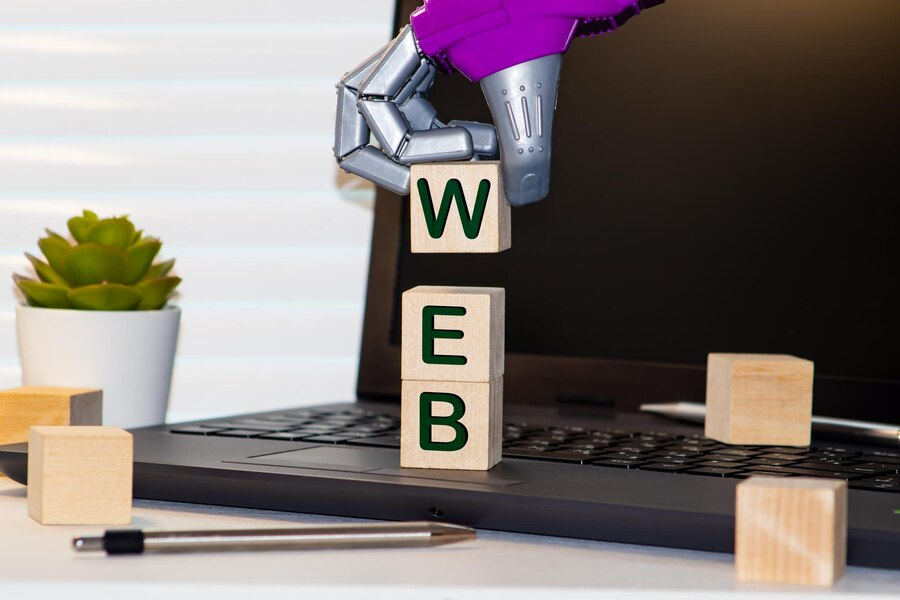222 Capitol Street, Suite 522
Charleston, WV 25301

Understanding the Languages of Web Development
Understanding the Languages of Web Development" delves into the intricate world of coding languages that power the dynamic landscape of the internet. In this exploration, we embark on a journey beyond the polished surface of websites, into the realm where digital magic is woven through lines of code. As users, we often marvel at the seamless functionality and captivating design of web pages, yet the true artistry lies behind the curtains, where developers master the languages shaping our online experiences. From HTML laying the foundation of structure to CSS adding style and flair, and JavaScript infusing interactivity, each language plays a vital role in the creation of immersive online environments. However, the intricacies of these languages can be daunting to the uninitiated, prompting a quest for understanding. Through this journey, we unravel the complexities, uncovering the symbiotic relationship between these languages, and gaining insights into their unique attributes and applications. Join us as we venture behind the scenes, unlocking the secrets of web development and demystifying the languages that power the digital realm.
Explore the foundational languages that power the web, from HTML to CSS and JavaScript.
Web development languages form the backbone of everything we experience on the internet. HTML (Hypertext Markup Language) serves as the foundation, defining the structure and content of web pages. CSS (Cascading Style Sheets) steps in to add styling, making those pages visually appealing and user-friendly. Meanwhile, JavaScript injects interactivity, allowing for dynamic elements and responsive behavior. Together, these languages create the immersive online experiences we've come to expect. Understanding their roles and capabilities is crucial for anyone looking to build or modify web content.

The Backbone of Web Content: Unravel the syntax and structure of HTML
HTML acts as the skeleton of the web, providing the structure upon which everything else is built. Through a system of tags and elements, HTML defines the layout and organization of
content, from paragraphs and headings to images and links. Understanding HTML means deciphering its syntax and mastering its elements to effectively structure web pages. Whether it's creating a simple blog post or designing a complex e-commerce site, HTML forms the foundation upon which all other web technologies rely.
Dive into the world of Cascading Style Sheets (CSS) and learn how to enhance the appearance and layout of web content.
CSS is the artist's palette of the web, allowing developers to transform plain HTML into visually stunning creations. With CSS, designers can control the colors, fonts, spacing, and layout of elements, bringing aesthetic harmony to web pages. Through selectors and declarations, CSS provides the means to apply styles consistently across an entire site or target specific elements for unique effects. Mastery of CSS involves understanding its box model, positioning techniques, and
responsive design principles, empowering developers to craft captivating user experiences.
Delve into the realm of JavaScript, the versatile programming language that brings interactivity and functionality to web pages.
JavaScript is the engine of interactivity on the web, enabling dynamic content, user input validation, and asynchronous communication. As a client-side scripting language, JavaScript runs directly in the browser, allowing for real-time updates and interactive elements without the need for page reloads. Its versatility extends to server-side environments through frameworks like Node.js, enabling full-stack development with a single language. JavaScript's ubiquity and flexibility make it an essential tool for modern web development, powering everything from simple animations to complex web applications.
Peek behind the curtain of web servers with languages like PHP, Python, and Ruby, powering dynamic content generation and database interactions.
While HTML, CSS, and JavaScript handle the frontend presentation and interaction, server-side languages like PHP, Python, and Ruby take care of the behind-the-scenes magic. These languages execute on the server, generating dynamic content based on user requests and interacting with databases to retrieve or store information. Whether it's processing form submissions, authenticating users, or personalizing content, server-side languages play a crucial role in the functionality and responsiveness of web applications. Understanding their capabilities and syntax opens the door to building powerful, data-driven web
solutions.

Explore popular frontend frameworks and libraries like React, Angular, and Vue.js, accelerating web development and enhancing user experiences.
Frontend frameworks and libraries revolutionize web development, offering developers powerful tools to streamline their workflow and elevate user interfaces.
- React:React, developed by Facebook, is renowned for its component-based architecture, enabling developers to build modular, reusable UI components.
- Angular:Angular, maintained by Google, is a comprehensive framework that provides a robust structure for building dynamic, single-page applications with features like two-way data binding and dependency injection.
- Vue.js:Vue.js is a progressive JavaScript framework favored for its simplicity and versatility, allowing developers to incrementally adopt its features and scale applications with ease.
By harnessing the capabilities of frontend frameworks and libraries like React, Angular, and Vue.js, developers can accelerate development cycles, improve code maintainability, and deliver engaging user experiences that drive success in the digital realm.
Understand how different languages communicate through APIs
In the interconnected landscape of web development, the ability to integrate diverse languages and systems is essential for creating robust and feature-rich web applications.
- API Communication: Application Programming Interfaces (APIs) serve as the bridge between different languages and platforms, allowing them to communicate and exchange data seamlessly.
- Data Integration: Through APIs, web applications can tap into a wealth of data from external sources such as social media platforms, databases, and cloud services, enriching their functionality and enhancing user experiences.
- Interoperability: By leveraging APIs, developers can overcome language barriers and integrate disparate systems, unlocking new opportunities for innovation and collaboration in web development.
Understanding how different languages communicate through APIs is fundamental for building scalable, interconnected web applications that leverage the power of the digital ecosystem to deliver value to users.
Conclusion
Delving into the intricate world of web development languages unveils a spectrum of tools and techniques crucial for crafting dynamic and engaging online experiences. From the foundational HTML and CSS to the versatile JavaScript and beyond, each language plays a pivotal role in shaping the digital landscape. Embracing the diversity of these languages empowers businesses to create websites that captivate audiences, drive traffic, and foster meaningful interactions, ultimately propelling them towards success in the competitive online sphere.
If you're ready to harness the power of web development languages for your digital presence, Ideation Digital Marketing stands ready to assist. Located in Charleston, WV, our team of skilled professionals is equipped with the expertise and passion to transform your vision into reality. Whether you're looking to revamp your existing website or embark on a new digital venture, contact us today at (304) 814-2445 to kickstart your journey towards online excellence

Main Office
222 Capitol Street, Suite 522
Charleston, WV 25301
other offices
48 1/2 Second Ave, Williamson, WV 25661
20 Clinch Mountain Ave, Lebanon, VA 24266,
Contact
DIGITAL MARKETING SERVICES
All Rights Reserved | Ideation Digital
Private Policy
All Rights Reserved | Ideation Digital












